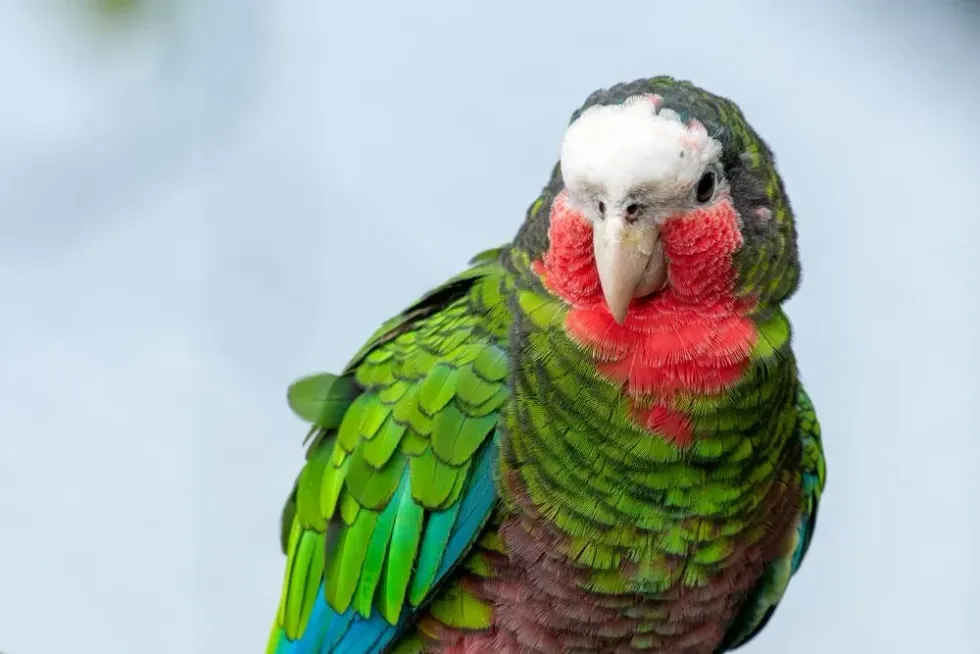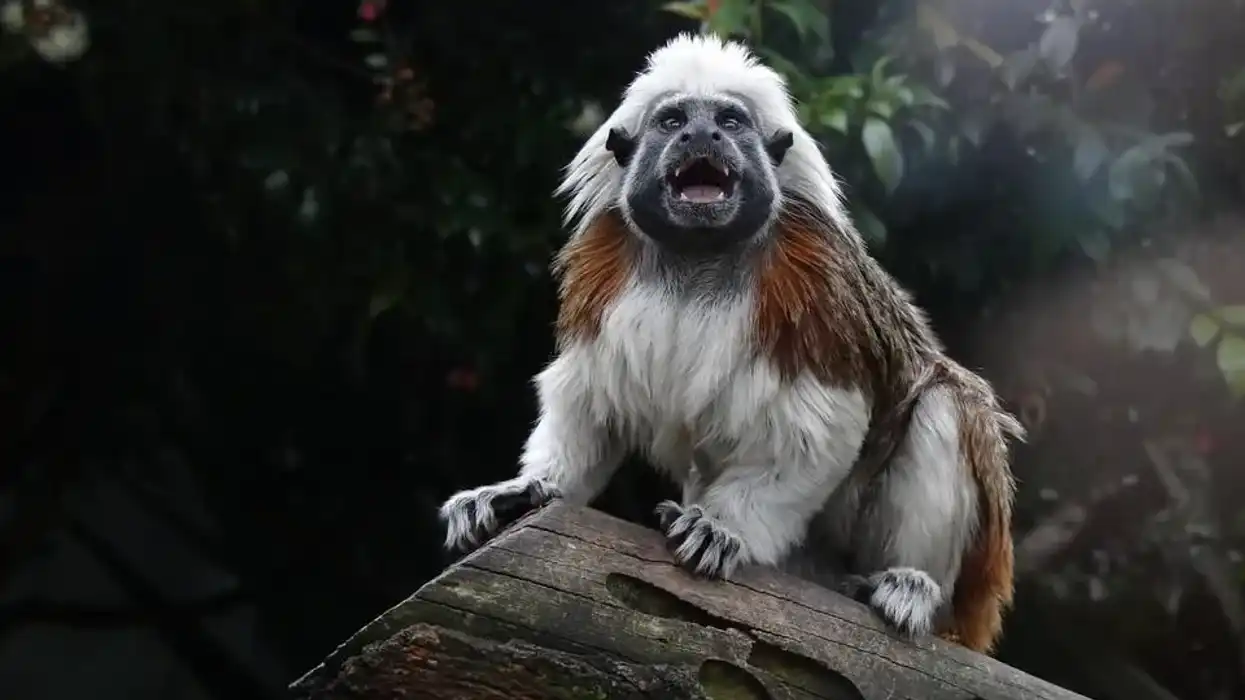Macaws, like blue-and-yellow macaws, have been spoken of by numerous ornithologists are one of the exotic species of bird and the Cuban macaw is no different.
As illustrated by François Le Vaillant, the French naturalist in his book Naturelle des Perroquets which was based on the watercolor painting of Jacques Barraband shows how macaws play an integral role in numerous reports.
The Cuban macaw, also dubbed as the Cuban red macaw, once inhabited the Islands of Cuba in Isla de la Juventud and are closely related to the scarlet macaw.
The flora and fauna of the islands are always considered unique because of less human interference but with time, the human interference has increased which to habitat disturbance and extinction of various exotic species including the Cuban macaw (Ara tricolor).
The genus Ara consists of two extinct species the Ara tricolor and Ara autochthones and the name of the genus is derived from the Tupian language and was coined by Bernard Germain de Lacépède, the French naturalist.
The macaws are identified for their vibrant plumage that makes them more vulnerable to trading and smuggling
To know more interesting facts about the Cuban red macaw keep reading this article.
For more relatable content, check out these royal penguin facts and birds of paradise facts for kids.
Cuban Macaw Interesting Facts
What type of animal is a Cuban macaw?
The Cuban macaw (Ara tricolor) is an extinct Cuban species of macaw acknowledged for their extraordinary plumage with the brownish-red dorsal region and red-blue wing feathers that inhabited the main island of Cuba.
What class of animal does a Cuban macaw belong to?
The Cuban macaw knew Cuban red macaw (Ara tricolor) belonged to the class of Aves, order Psittaciformes, family Psittacidae, and genus Ara.
How many Cuban macaws are there in the world?
This species of Ara which was discovered on the Caribbean islands faced extinction during the 19th century. It was an exotic-looking bird that has vanished from the face of the Earth.
Where does a Cuban macaw live?
The Cuban macaw range map includes the main island of Cuba and nearby Caribbean islands before it became extinct. Not much has been accounted for regarding their geographical distribution, however, it inhabited the Isla de la Juventud but its range was limited only to the central and western region of the island particularly the Zapata swamp.
What is a Cuban macaw's habitat?
The Cuban red macaw (Ara tricolor) once inhabited the open landscape with scattered trees mainly in the region of Zapata swamp where the flora was adequate. The river that flowed into the swamp was bordered by wide areas with scattered palm and hardwood.
The range was limitless and the seasonal verdure is mainly semi-deciduous and evergreen where they lived in hollow trees.
Who do Cuban macaws live with?
There is not adequate information about their behavior, but these species were frequently spotted in pairs or families amongst the scattered trees and open terrain.
How long does a Cuban macaw live?
The lifespan of macaws depends on whether they are in wild or in captivity, The species of macaw was kept as pets locally and could live till the age of 40.
However, in the wild, although they lead a free life yet they had to endure myriad cruelty for which this species became extinct but the approximate lifespan is assumed to be 28 years.
How do they reproduce?
There are not abundant data available regarding the reproduction or breeding habit of this species, but the method of reproduction is sexual, the female lays eggs and their nests were commonly the hollow trees.
Other species like the Dominican macaws which are also an extinct species were monogamous but there isn't adequate information to justify the same for the Cuban red macaws.
What is their conservation status?
This species of Ara was brutally hunted for their meat and kept as a pet, they were smuggled and traded, they were even a victim of the natural calamities which ultimately wiped off the entire species in the 19th century and now they are Extinct as listed by the IUCN.
Cuban Macaw Fun Facts
What do Cuban macaws look like?

The Cuban red macaw (Ara tricolor) is an extinct species of macaw that was observed in the Isla de la Juventud.
The physical description of macaws has to be accounted for by Juan Cristóbal Gundlach and many others, their appearance was convincing enough to relate them with the scarlet macaw, however, the Cuban red macaw differs on various grounds.
The size of this extinct Cuban species of macaw is 18–20 in (45–50 cm) with a wingspan of 10.8–11.4 in (27-29 cm) and a tail of 8.5–11.4 in (22-29 cm) which makes them one of the smallest Ara species.
This is one vibrant species with a red temple which eventually faded to an orangish shade, then yellow near its neck to give an extraordinary gradient look.
The plumage of the dorsal region was brownish red with a greenish tint and the wing feathers were red and blue.
The plumage covering their face, thighs, abdomen, and chest was orange while the ventral region, under the tail, and rump was blue.
The color of their bill is frequently interpreted as dark and the color ranged from black to greyish. The scarlet macaw is the nearest mainland species that can be related to the Cuban red macaw because of the similar red and blue plumage and white patch around the area of the eyes.
But, what differentiates the Cuban red macaw is their dark bill, colored eyes, and yellow patch on the shoulder.
Moreover, the geographical range of the scarlet macaws expands to the perimeter of the Caribbean sea.
How cute are they?
The Cuban macaw is comparatively small, cute, and colorful, the combination of various colors made them stand out.
How do they communicate?
These birds were vocal, like all the other macaws, and had a different set of tones and sound to communicate with each other. Their voice has been described as loud and piercing and when they fly they produce this sound.
They preferred living in a family or pairs and their sound was similar to that of the Central American macaws.
How big is a Cuban macaw?
The Cuban macaw is not a large species, it is related to the scarlet macaw but it is not as big as the scarlet macaw. It has a body length of 18–20 in (45–50 cm) and a wingspan of 10.8–11.4 in (27-29 cm).
How fast can a Cuban macaw move?
Macaws can attain a speed of 34.7 mph (56 kph) while flying, but the exact speed of the Cuban red macaws is not listed.
How much does a Cuban macaw weigh?
The weight of this bird has not been recorded.
What are the male and female names of the species?
The Cuban red macaws are not sexually dimorphic and it is difficult to differentiate the males from the females, and there are no recorded sex-specific names for them.
What would you call a baby Cuban macaw?
The offsprings of parrots are known as chicks, but the exact phrase which is used to describe the baby Cuban macaw is unavailable just like their breeding habits, eggs, and clutch size.
What do they eat?
The fundamental diet of the Cuban red macaw consists of fruits, seeds, buds, and tender shoots.
Are they poisonous?
None of the species of the macaws is poisonous.
Would they make a good pet?
Cuban macaw as a pet was a popular culture that had a great impact on the population of this bird because it was caught, smuggled, and traded because of its exotic appearance. Also, this species of Ara was not as sharp as the other species who could escape skillfully which made petting them manageable.
Did you know...
In fifteen museums in Cuba, Europe, and the US there are 19 specimens of the Cuban red macaws.
Why did the Cuban macaw go extinct?
The Cuban red macaw (Ara tricolor) was one of the renowned species of the Caribbean Islands and various factors led to their extinction.
Even before the Europeans arrived on the Caribbean islands exotic bird species were hunted and traded by the Native Americans.
The Cuban red macaw found in the Isla de la Juventud was killed for food.
Apart from consuming the meat, this species was kept as pets because they were not as quick as other birds who could escape.
The Caribbean macaws particularly this species experienced pet trading and smuggling as they were being traded and sent to Europe which became a common species displayed in the European zoos which is a primary cause of their extinction.
It was in the 19th century when the population took a huge toll.
Other factors may include the collectors who collected young birds and felling the trees which accidentally perished the young birds these methods led to the gradual declination as it gradually destroyed the species breeding habitat.
Natural calamities, like the hurricane which hit the city of Pinar del Río in 1844, washed off their whole population, two other hurricanes which occurred in 1846 and 1856 destroyed their habitat and scattered the remaining population and all these unfortunate events transpired in fragmented habitat and the Cuban red macaw was forced to forage and dwell in regions where it was more susceptible to hunting.
Were Cuban macaws predators?
This species of macaw were herbivores and their diet has been depicted by Gundlach which consists of primary fruits, and various seeds including the Chinaberry tree seeds, buds, and tender shoots. The Chinaberry tree has been widely naturalized in West Indies, and there is no account of this species preying on living creatures.
Hence they cannot be labeled as predators rather, the Cuban red macaw encountered brutality and is often among the first species to be exterminated from a given locality, especially islands.
Here at Kidadl, we have carefully created lots of interesting family-friendly animal facts for everyone to discover! Learn more about some other birds from our toucan facts and eagle facts pages.
You can even occupy yourself at home by coloring in one of our free printable cuban macaw coloring pages.









